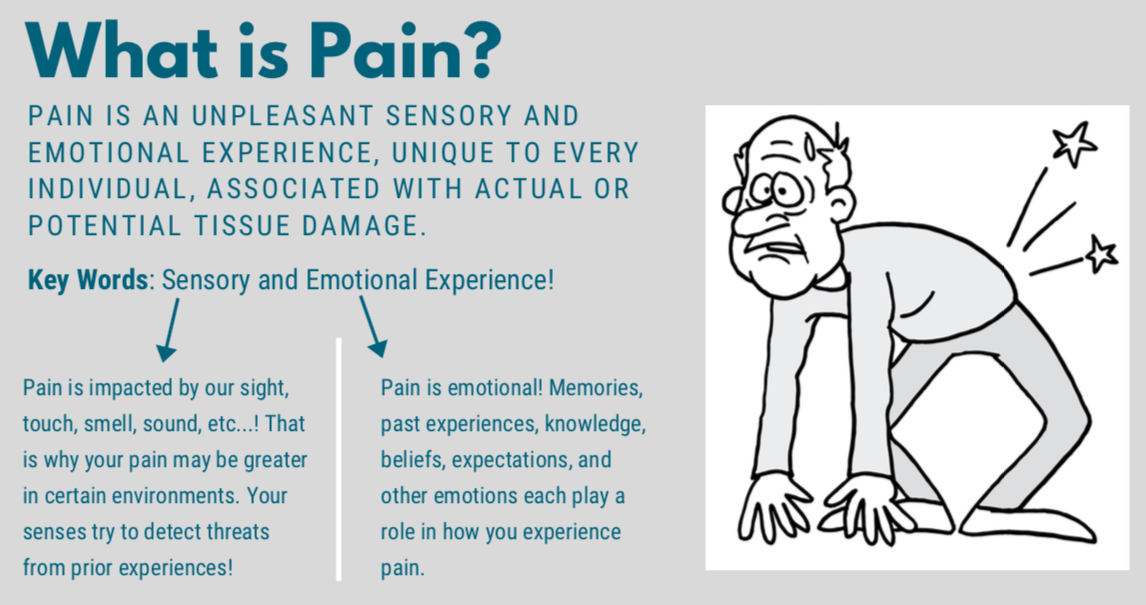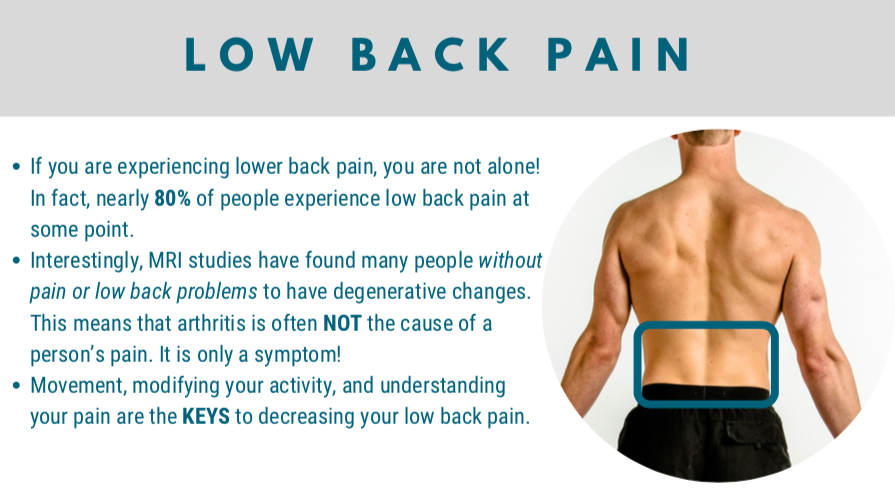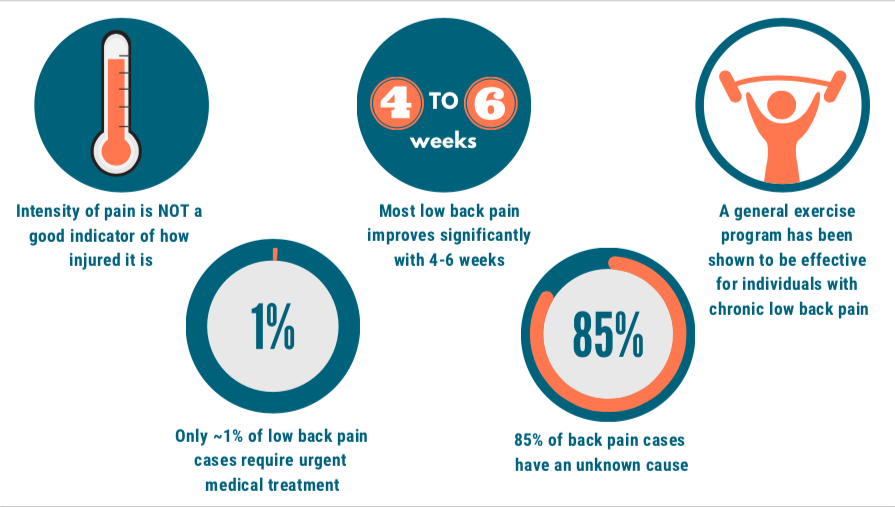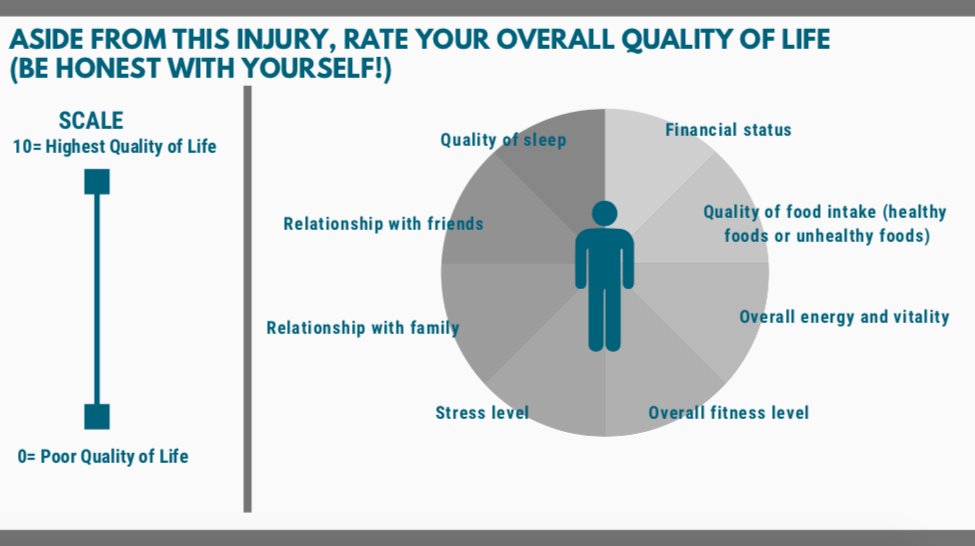|
If you have ever experienced lower back pain, there is a good chance you can recall some very specific details about the experience. For example, you may remember where you were, what you were doing, and how intense the pain was for 24-48 hours after the injury. People often remember this experience (and those similar to it) because the human brain prioritizes experiences that require a significant amount of attention. On the same list of significant experiences (even though the emotional response is different) would be watching the birth of your child, seeing a beautiful sunset, getting married, etc... Any experience that overwhelms the senses (sound, sound, touch, smell) is likely to be remembered because of the intense emotional association. If you are currently experiencing low back pain or worry about having low back in the future, this article will help you better understand pain and quickly manage any symptoms that may arise. Understand Your PainAt this point, you may be thinking, "Leave the emotions out of it...I strained my back muscle, not my brain!" While the low back muscle may be the injured tissue, it is necessary to look beyond the muscle to fully understand why the magnitude of your pain. Pain, by definition, is an unpleasant sensory and emotional experience, unique to every individual, associated with actual or potential tissue damage. Therefore, it is impossible to seperate the pain from the emotional response. Regarding low back pain, it is important to know that pain is rarely caused by a serious medical issue (such as a fracture or cancer), that would require urgent medical attention. The majority of lower back pain (>70%) is due to tissue sprains and muscle strains, which respond well to rest, easy exercise, and education. For this reason, X-rays and MRIs are not indicated as they often do not correlate with pain. Learn the Back Facts
Get Moving (Gradually and Easy): The Goldilocks PrincipleThe story of Goldilocks is about finding the right fit, and I can tell you that little blonde girl was onto something! The idea of not too much, not too little, but just the right amount applies to many facets of life. Gradually increasing activity to improve pain and gain strength is certainly no exception. The human body gets stronger and more resilient through a process of gradual, progressive exposure and strengthening. To get stronger, you slowly and steadily lift heavier weights over time. If you lift too much too soon, you’ll become sore, or worse, injured. However, if you don’t lift enough weight to challenge your body, you’ll never get any stronger. The exact equation of not too much, not too little, but just the right amount is unique to everyone and will change over time as your body matures. As you are recovering from a lower back injury, start moving slowly in small ranges of motion. As your fear decreases and ability to move increases, gradually increase the range of motion and demands of the movement. For example, in the progression below, I show how to gradually improve bending forward. Don't Neglect Other Areas of Your HealthIf you are experiencing pain, it is easy to blame the pain solely on a physical or structural problem. With that being said, I am not discrediting the tissue injury that may have occurred. After a traumatic event, such as a car accident or lifting injury, inflammation and other chemical signals (redness, warmth, swelling) can be observed. However, since you just learned about the complex nature of pain, I urge you to think about other areas in your life that may impact your pain response. In these moments, I always tell my patients to 'respect the healing process.' This includes focusing on good sleep and rest, reducing or minimizing stress, eating a well balanced diet, and performing gentle movement (as discussed above). In the picture below, I outline many of the areas that impact your experience of pain. Remain Positive and OptimisticFinally, mindset is key! Following an injury, our brains naturally revert to the worst case scenario. Fear, anxiety, worry, and other negative emotions flood your mind. While listening to these emotions is important in the moments of actual threat, the majority of these fears are not accurate. The reality is that you will most likely return to your normal life in a matter of days or weeks. In the midst of pain, having a mantra, such as "my back is strong and health," can help slow down the negative emotional response. By mindful repeating or thinking optimistic thoughts, you will strengthen the brain connections geared toward optimism and happiness. Jim Heafner PT, DPT, OCS Heafner Health Physical Therapy Boulder, CO If you are looking for low back self treatment strategies, click here!
239 Comments
|
Heafner HealthPhysical Therapy Archives
April 2024
Categories |






 RSS Feed
RSS Feed
